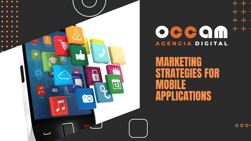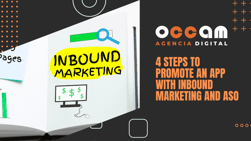Index Content
did you know that there is a key to verifying that the content you generate is of value? Or, better yet, did you know that this key lies within you? It is a fundamental idea that underpins the value of content in the IT sector. A sort of path to the productivity of words that, when combined correctly, produce magic. In this case, their order does alter the product. If you want to discover the key we are talking about, just read a few lines below. Ready?
Your content must bring value to your audience
You have just read the key that I was talking about. Remember it in your mind: your content in the IT sector must educate your users or potential customers. Otherwise, what would be its value? It seems too simple a way to check the validity of your content before publishing it, and in reality it is. I bet anything that, since you were a child, you were taught to ask questions to solve doubts. Ask questions in class, at work, in the street, at home... However, it is also necessary to ask questions to yourself, because when writing your content, only you have the answers. If you do not trust in its validity, who do you think will do it for you?
what questions should you ask yourself before publishing content in the IT sector?
Here are 20 ways to determine the value of your content. Based on the answers, you can make specific changes to the approach, words and modes of expression used that will ultimately add the value your users are expecting from you. Without further ado, here are the questions associated with each process of content creation: idea generation, content creation, dissemination and optimisation.
- Phase 1: Idea generation: In this process, the most appropriate questions to ask are: Does the content fit my audience?
- does the content fit my audience?
- am I bringing new ideas to the topic I am going to talk about?
- will it add value?
- does it fit my audience's Buyer Journey?
- is the idea powerful enough to attract traffic?
- does it fit what my audience needs?
- how or in what way will it help them?
- Phase 2: Content creation - the questions you need to ask yourself are:
- am I expressing the content in a way that my audience can understand?
- am I using the right words?
- is the structure neat and tidy?
- is the title appealing and attractive?
- does the post's intro encourage further reading?
- does it include images that help to understand the content?
- does it meet the specified requirements for positioning?
- am I using the right keywords?
- is my content educating?
- Stage 3: Dissemination of the content- the questions you should ask yourself at this stage are:
- what are the most appropriate ways for my content to reach potential customers?
- am I disseminating the content in the right ways?
- is the content being published at the right time and in the right place?
- am I using an appropriate network scheduling system?
- Once you have reached this point, you should think about how you can usethe most effective optimisation techniques, as well as ask yourself if you can improve any of the points we have seen so far. You want to get traffic to your blog and have a good positioning, so improving and working on each of these points will be essential to achieve it.
Content generated according to the Buyer Journey
When generating content there are several aspects that we must take into account. The questions we have just mentioned would not make much sense if we do not adapt them to the Buyer Journey. Discovery > Consideration > Decision are the three phases that the user goes through before hiring your product or technology service. Thinking about what content you should give in each of them is essential.
- Discovery: You must focus on educating. The customer becomes aware of his need or problem, and investigates without a commercial intention.
- Consideration: Users start researching different options, so the content should focus on them.
- Purchase / Decision: The content should focus on your product or service. This is the stage where, naturally, the customer decides to buy.
After the Buyer Journey, you can start working on the content lifecycle that we have presented. Remember that it is a cyclical and constant process with which you want to convert strangers into visitors, visitors into sales opportunities, sales opportunities into customers, and customers into promoters of your technology company.
To question is to learn
To question yourself is to know yourself in order to get the most out of yourself. Asking yourself these kinds of questions before publishing content in the IT sector is essential to verify that the writing you are generating serves your audience. Are you ready to answer yourself? When all your answers are a resounding 'Yes', you will be ready to publish
follow these steps and get good results for your IT company!





